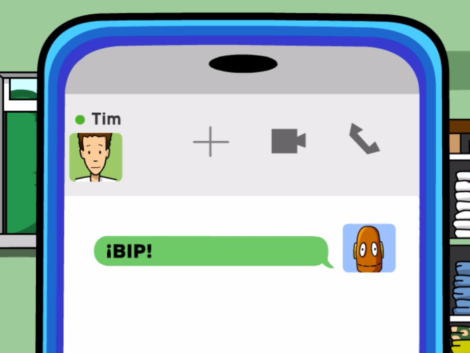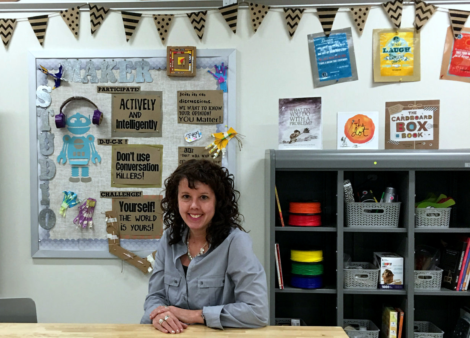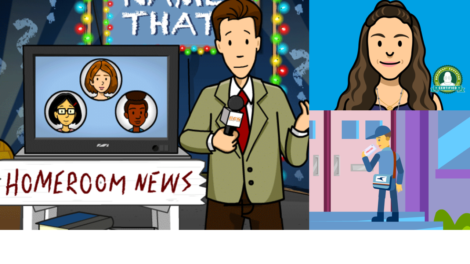
The Beep in Bilingualism
Posted by cemignano on
We’d like to welcome guest-blogger Natalia Rasavong to the blog! Read on to see how Natalia uses both BrainPOP and BrainPOP Español in a dual language classroom to support content knowledge and language development.
Teaching these days is not an easy job. However, it becomes more challenging if you are teaching more than one language. That was the challenge I took twelve years ago in a town named Racine in Wisconsin. I started teaching in a 4th grade Dual Language classroom full of amazing children eager to learn. My job was to teach Math, Science and Spanish Language Arts in Spanish, and Health, Social Studies and English Language Arts in English. Even though it was very clear what to teach and what language to use, I felt like I didn’t have enough resources in both languages. I had multiple resources to teach in English, but not as many in Spanish. On my second year of teaching in a Dual Language classroom I was introduced to BrainPOP and I thought it was the most amazing thing ever. Little did I know they have more than movies and quizzes, but I learned they also have a curriculum in Spanish.
I was instantly hooked. BrainPOP was showing me a whole new world of content knowledge in Spanish. I loved it! The movies were short and they were not just a bad translation of the English ones. They were done with a native Spanish-speaking Tim and Moby (bip)! Students were able to hear correct pronunciation, a perfect accent and wonderful content. Up until this day, BrainPOP Español has been my best ally in teaching a second language.
I use the movies most of the time as a whole class. The movies have always helped me to introduce new content, review academic language or check for previous knowledge. There are some times that I also use the movies in small groups to reteach something or review content. After students watch the movie and discuss the content, the follow up activities vary. Even though BrainPOP Español doesn’t have all the resources that the English version has yet, I have plenty of activities and readings to complement my lessons. I even use the activities for small group instruction. The purpose of my class is to teach language through content, and that’s exactly what BrainPOP Español can offer me.
How do I introduce new content?
Most educators who use BrainPOP use the movies to introduce new content. Why not? The movies are short, fun, visually appealing and students love them. They are easy to understand and they are an opportunity to tackle academic language. BrainPOP Español also contains those wonderful characteristics and it also has cute jokes in Spanish. However, in the last few years I started using some other BrainPOP resources to introduce content. One of my favorite resources are “Lecturas Relacionadas” (Related Readings). Sometimes I divide the students in small groups and give them small parts of the related reading, then we get together as a group and make inquiry charts. A fantastic way to make virtual inquiry charts can be with the Make-a-Map tool. Even though Make-a-Map is not available in Spanish, we can use the English version for pictures and resources, and write the Spanish vocabulary.
Academic language – Hard for second language learners…and first language learners too.
As a second language learner myself, I know how hard is to master academic language. You need to master academic language twice, in both languages. In my class I wanted my students to make life connections to the language. That for me was the only way they could keep the language for life. Social Language is easy to learn since you are constantly using it. However, academic language is always challenging even as a first language learner. It doesn’t matter, we are all language learners, even in our first language. For new knowledge to move from short term memory to long term memory, repetition has to happen. Language needs to be repetitive, but that doesn’t mean boring. BrainPOP allows me to repeat academic language in multiple ways. I have my students watching BrainPOP movies, reading about a topic from the Related Readings, creating content and using academic language through making a map or making a movie.
Why is prior knowledge important?
Things make more sense if they have some kind of connection to us. Prior content knowledge makes learning easier and more meaningful. Even the smallest connection will activate our brain to build new knowledge. BrainPOP has helped me activate students’ prior knowledge in multiple ways. The different activities offered by BrainPOP allow my students to make choices and feel empowered in their learning. They don’t need to complete every activity BrainPOP has to offer, but they need to make sure they are responsible for their learning.
I can keep going on and on about how BrainPOP has been a tool that’s led to success in my classroom and the many ways I use it, but other students and educators need to try it themselves to experience why BrainPOP is above the other resources out there. I also would like to conclude by pointing out that BrainPOP is an excellent resource for students to use at home. Not only as a teacher but as a parent myself, I access all the BrainPOP products on my smart devices at home and use them with my own children. I also have taught students and parents in my district how to use them at home. With a paid subscription to BrainPOP, students can use BrainPOP and all their resources 24/7.














